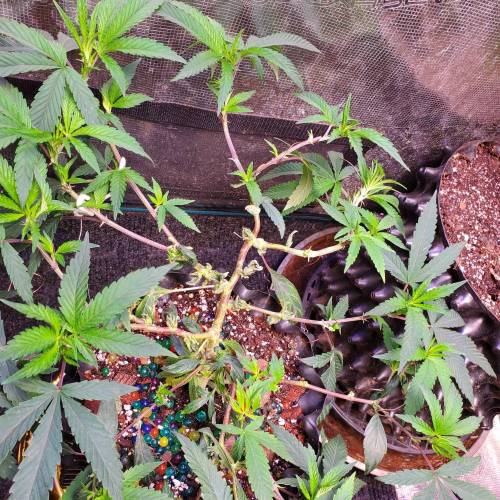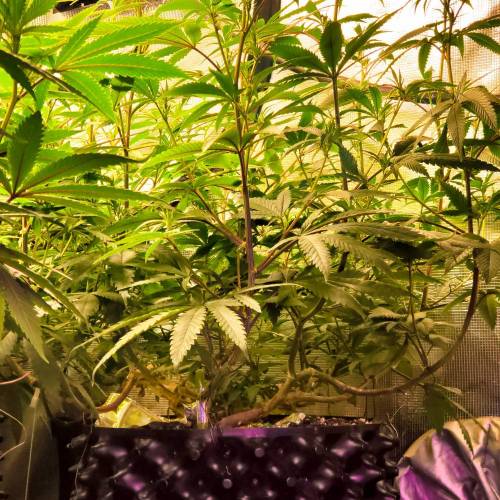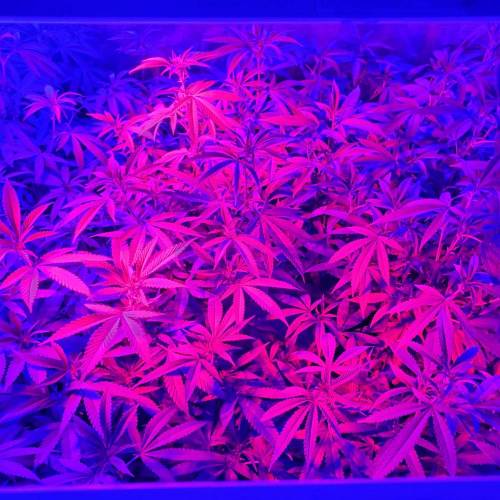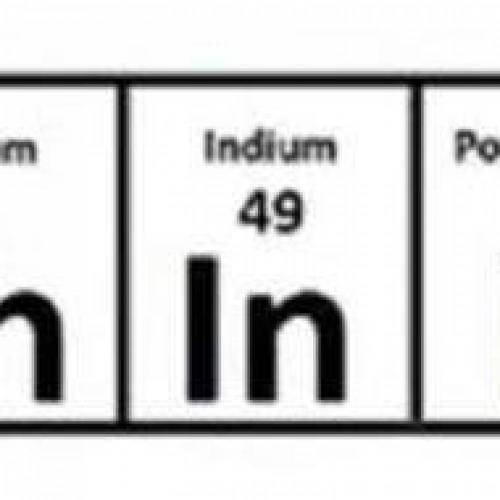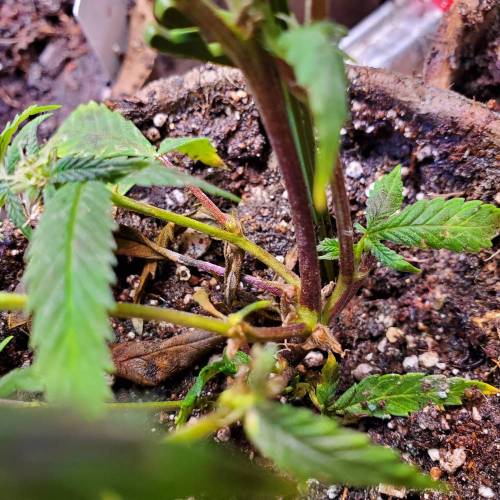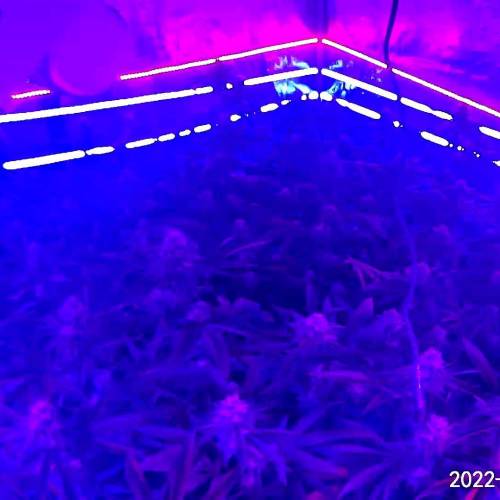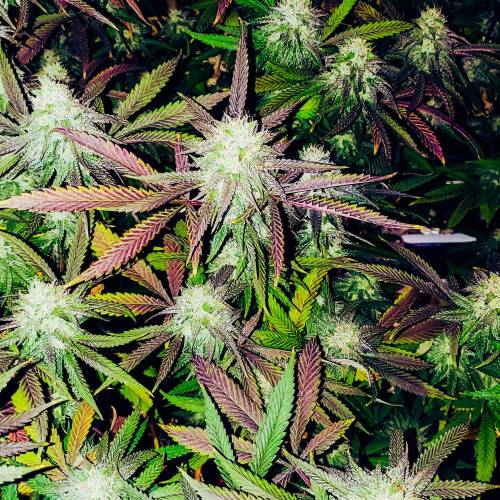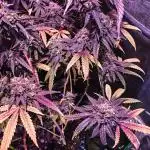The Grow Awards 2026 🏆 

















































"Grand Daddy Purp" C#3

FLO
lampsoul Light Emitting Diodes/250W
lampsoul
Stepwell Supersoil Other
Coco Coir
Vermiculite
Perlite
Sphagum Moss Other
Charcoal Other
Pumice Other
Lava Rock Other
Crab Chitin Other
Shrimp Chitin Other
Hydroton Pebbles Other
Indoor
Room Type
Topping
weeks 1
LST
weeks 1, 3-4, 6-7
Defoliation
weeks 4, 10, 12
27 liters
Pot Size
3.79 liters
Watering
Start at Harvest
G
Germination4y ago
Nutrients 1
Pure Coconut Water
500 mll
Ultraviolet These were tiny cuttings taken back 1 week into the flowering of Caitlyn, kinda messed up and took the cuttings too early into flower and was far too small no bigger than a thumb, it really messed up the plant hormonally taking longer than expected to root, I put no stress on the cuts to grow and they were kept in a comfortable dimmed state for 6-7 weeks to allow full regeneration and under pure blue light with just enough ppfd to keep it alive once rooted yet keep growth to a minimum. I read some studies that indicated higher exposure to blue light decreases internodal spacing quite dramatically. 8 inches tall, with 12 internodes, crazy stuff. Very excited to see what we can do with these, given how much of a genetic standout the mother was.
Cloning is different than growing a plant from seed because the seed contains slightly different genes than the plant from which it came. So if you take a seed from one plant, put it in the ground, and grow it to maturity, the new plant will be different from the original. The new plant may look different (or it may not), but the real change occurs at the genetic level. With cloning, on the other hand, you can compare the two separate plants down to the cellular level and not see any difference. Monster cropping is the process of cutting off a piece of a cannabis plant in its flowering stage, replanting it, and nurturing it until it grows on its own. and reverts back to vegetative growth. This definition sounds very similar — if not identical — to the definition for cloning mentioned above. That’s because monster cropping, at its most basic, is just creating clones of the mother plant. So why do it? And why do ganja growers call it monster cropping instead of cloning? We can answer both of those questions by examining the name itself.
The formal definition of the word monster is: An imaginary creature that is typically large, ugly, and frightening. Over the years, that definition has evolved slightly into A thing or animal that is excessively or dauntingly large. With the exception of the word “frightening” in the first definition, both pretty much describe the clones you get from the mother plant: large and ugly. Once the clones take root, they can grow to be extremely large…possibly even larger than the mother plant. The clones will be ugly in many ways. You can expect single-finger leaves and possibly even some mutations. Don’t fret. That’s a normal response to all the stress you inflicted on the poor little cutting. If you nurture it correctly, the plant will get over it in no time.CroppingYounger, more tech-savvy readers may only be familiar with the word “crop” as it relates to cutting a picture down to a smaller size. That’s not what we’re talking about here. In this case, we’re talking about a much older definition: a cultivated plant. In the agricultural sense, “crop” also implies a large number of said cultivated plants. So you could have a corn crop, a wheat crop, and, yes, a cannabis crop. Taking it a step further, then, “cropping” is an informal word for growing a group of plants together. It’s not used very much anywhere other than the cannabis community, but you know how much we stoners like to invent new words! Putting It All TogetherWe’ve talked about “monster” and we’ve talked about “cropping” separately, so let’s put them together and see what we get. Big clones of the original plus an expansive group of plants: that’s monster cropping in a nutshell. Dissecting the name clues you into what it is exactly, but it also gives you an idea of why you would want to do it — monster yields.
Why does monster cropping work? In a word, stress. Stress rejuvenates cannabis and triggers the development of desired traits, including Vigorous growth of leaves, branches, nodes, and bud sites (the monster part of the equation) Higher levels of THC Yes, you read that right. Monster cropping produces higher levels of THC. In a growing pot plant, cannabinoids act as a defense mechanism against predators (i.e., animals that eat the plant). So when you do what those predators do — remove pieces of the original plant — you cause both the mother plant and the cut piece to go into defense mode. In the wild, that means releasing more THC to deter future attacks. Or, in the case of monster cropping, it means high-quality, high-THC weed.
14 likes
3 comments
Share
Used method
Directly In Substrate
Germination Method
1
Week 1. Vegetation4y ago
20.32 cm
Height
18 hrs
Light Schedule
25 °C
Day Air Temp
6.0
pH
No Smell
Smell
130 PPM
TDS
40 %
Air Humidity
21 °C
Solution Temp
22 °C
Substrate Temp
21 °C
Night Air Temp
0.98 liters
Pot Size
0.19 liters
Watering Volume
15.24 cm
Lamp Distance
500 PPM
CO₂ Level
Nutrients 2
Pure Coconut Water
100 mll

RAW B-vitamin
0.326 mll
Ultraviolet Known from previous grow the genetics are resilient to stress, even enjoys it. Going to go hard and go early with these beauties.
B Vitamin foliar applied. B-Vitamin is awesome for helping plants deal with stress, I tend to foliar and supplement during transplant, lst etc, It smells oddly satisfying too.
Just playing the waiting game with these right now, bend, grow repeat for weeks.
Monstercropped clones exhibiting vastly increased production of new nodes, each flower the plant tries to produce ends up making a new main top. Very interesting to note how plants have the ability to dictate resources based on available light exposure and assign resources where optimal,
13 likes
2 comments
Share
Used techniques
LST
Technique
Topping
Technique
3
Week 3. Vegetation4y ago
20.32 cm
Height
18 hrs
Light Schedule
25 °C
Day Air Temp
6.0
pH
No Smell
Smell
130 PPM
TDS
40 %
Air Humidity
21 °C
Solution Temp
22 °C
Substrate Temp
22 °C
Night Air Temp
0.98 liters
Pot Size
0.19 liters
Watering Volume
1000 PPM
CO₂ Level
Nutrients 1

Mycorrhizal Inoculant
50 mll
Ultraviolet Chugging along, transplanted to 1gallon airpruners, added Dynomyco to rootzones.
Plants dont know whether to create leaves for veg or flower, hormonally screws the plant up taking the clone 1 week into flowering and putting it back into a veg cycle.
11 likes
comments
Share
Used techniques
LST
Technique
4
Week 4. Vegetation4y ago
20.32 cm
Height
18 hrs
Light Schedule
25 °C
Day Air Temp
6.0
pH
No Smell
Smell
130 PPM
TDS
40 %
Air Humidity
21 °C
Solution Temp
22 °C
Substrate Temp
22 °C
Night Air Temp
0.98 liters
Pot Size
0.19 liters
Watering Volume
60.96 cm
Lamp Distance
1000 PPM
CO₂ Level
Nutrients 4
Pure Coconut Water
100 mll

RAW Nitrogen
0.651 mll

RAW B-Vital
0.326 mll
Ultraviolet Air pruners really are worth it, not the price, but the rootzone is noticeably more vigorous.
11 likes
comments
Share
Used techniques
LST
Technique
Defoliation
Technique
6
Week 6. Vegetation4y ago
30.48 cm
Height
22 hrs
Light Schedule
25 °C
Day Air Temp
6.0
pH
No Smell
Smell
240 PPM
TDS
40 %
Air Humidity
21 °C
Solution Temp
22 °C
Substrate Temp
22 °C
Night Air Temp
3.79 liters
Pot Size
0.49 liters
Watering Volume
60.96 cm
Lamp Distance
1000 PPM
CO₂ Level
Nutrients 10
Aluminum Sulphate
200 mll

RAW Nitrogen
50 mll

RAW B-Vital
50 mll
Ultraviolet Coming along, I find the urge to just let it grow vertically but last grow I was a little underwhelmed with the spread once the canopy was past the stretch, I will look to continue LST , really starting to thicken up around the base. Plant must be feeling the need for extreme reinforcement of stem trunk as the extra weight of vertical growth on the long supporting stems have little in way of support.
Filled waterbeads with a concoction of nitrogen, vitamin b, humic, phosphorus, omina.
Added aluminum suplhate to help PH medium, strain likes it slightly acidic.
11 likes
comments
Share
Used techniques
LST
Technique
7
Week 7. Vegetation4y ago
45.72 cm
Height
12 hrs
Light Schedule
25 °C
Day Air Temp
6.0
pH
No Smell
Smell
150 PPM
TDS
40 %
Air Humidity
21 °C
Solution Temp
22 °C
Substrate Temp
22 °C
Night Air Temp
26.5 liters
Pot Size
7.57 liters
Watering Volume
60.96 cm
Lamp Distance
850 PPM
CO₂ Level
Nutrients 6
Aluminum Sulphate
2.6 mll

RAW Nitrogen
1.3 mll

RAW Amino Acids
0.33 mll
Ultraviolet Transplanted up to 7gal air pruners, rootzones look 👍. Just some last bending of branches to do this week, working towards leveling the canopy, getting close to flowering switch so I will start increasing the hours of darkness 1 incrementally 1 day at a time giving the plant ample time to prepare for the massive hormonal changes. This mimics nature slightly better given hours of darkness changing over the many months. Doing a sharp 18/6 to 12/12 feels like the plant really gets caught unprepared.
Added far-red LED to simulate sunrise and sunset 30 mins each side.
13 likes
2 comments
Share
Used techniques
LST
Technique
8
Week 8. Vegetation4y ago
60.96 cm
Height
12 hrs
Light Schedule
29 °C
Day Air Temp
6.0
pH
No Smell
Smell
220 PPM
TDS
45 %
Air Humidity
22 °C
Solution Temp
23 °C
Substrate Temp
23 °C
Night Air Temp
26.5 liters
Pot Size
7.57 liters
Watering Volume
45.72 cm
Lamp Distance
1350 PPM
CO₂ Level
Nutrients 6

RAW Nitrogen
0.65 mll

RAW Amino Acids
0.08 mll

RAW Enzymes
0.08 mll
Ultraviolet ANTHOCYANIN production is primarily controlled by the Cryptochrome (CR1) Photoreceptor ( !! UV and Blue Spectrums are primary drivers in the production of the pigment that replaces chlorophyll, isn't that awesome!
1. Diverse photoreceptors in plants
Many civilizations, including the sun god of ancient Egypt, thought that the blessings of sunlight were the source of life. In fact, the survival of all life, including humans, is supported by the photosynthesis of plants that capture solar energy. Plants that perform photosynthesis have no means of transportation except for some algae. Therefore, it is necessary to monitor various changes in the external environment and respond appropriately to the place to survive. Among various environmental information, light is especially important information for plants that perform photosynthesis.
In the process of evolution, plants acquired phytochrome, which mainly receives light in the red light region, and multiple blue light receptors, including his hytropin and phototropin, in order to sense the light environment. .. In addition to these, an ultraviolet light receptor named UVR8 was recently discovered. The latest image of the molecular structure and function of these various plant photoreceptors (Fig. 1), focusing on phytochrome and phototropin.
Figure 1
Ultraviolet-visible absorption spectra of phytochrome, cryptochrome, phototropin, and UVR8. The dashed line represents each bioactive absorption spectrum.
2. Phytochrome; red-far red photoreversible molecular switch
What is phytochrome?
Phytochrome is a photochromic photoreceptor, and has two absorption types, a red light absorption type Pr (absorption maximum wavelength of about 665 nm) and a far-red light absorption type Pfr (730 nm). Reversible light conversion between the two by red light and far-red light, respectively(Fig. 1A, solid line and broken line). In general, Pfr is the active form that causes a physiological response. With some exceptions, phytochrome can be said to function as a photoreversible molecular switch. The background of the discovery is as follows. There are some types of plants that require light for germination (light seed germination). From that study, it was found that germination was induced by red light, the effect was inhibited by subsequent far-red light irradiation, and this could be repeated, and the existence of photoreceptors that reversibly photoconvert was predicted. In 1959, its existence was confirmed by the absorption spectrum measurement of the yellow sprout tissue, and it was named phytochrome. Why does the plant have a sensor to distinguish between such red light and far-red light? There is no big difference between the red and far-red light regions in the open-field spectrum of sunlight, but the proportion of red light is greatly reduced due to the absorption of chloroplasts in the shade of plants. Similar changes in light quality occur in the evening sunlight. Plants perceive this difference in light quality as the ratio of Pr and Pfr, recognize the light environment, and respond to it.
Subsequent studies have revealed that it is responsible for various photomorphogenic reactions such as photoperiodic flowering induction, shade repellent, and deyellowing (greening). Furthermore, with the introduction of the model plant Arabidopsis thaliana (At) and the development of molecular biological analysis methods, research has progressed dramatically, and his five types of phytochromes (phyA-E) are present in Arabidopsis thaliana. all right. With the progress of the genome project, Fi’s tochrome-like photoreceptors were found in cyanobacteria, a photosynthetic prokaryotes other than plants. Furthermore, in non-photosynthetic bacteria, a homologue molecule called bacteriophytochrome photoreceptor (BphP) was found in Pseudomonas aeruginosa (Pa) and radiation-resistant bacteria (Deinococcus radiodurans, Dr).
Domain structure of phytochrome molecule
Phytochrome molecule can be roughly divided into N-terminal side and C-terminal side region. PAS (Per / Arndt / Sim: blue), GAF (cGMP phosphodiesterase / adenylyl cyclase / FhlA: green), PHY (phyto-chrome: purple) 3 in the N-terminal region of plant phytochrome (Fig. 2A) There are two domains and an N-terminal extension region (NTE: dark blue), and phytochromobilin (PΦB), which is one of the ring-opening tetrapyrroles, is thioether-bonded to the system stored in GAF as a chromophore. ing. PAS is a domain involved in the interaction between signal transduction-related proteins, and PHY is a phytochrome-specific domain. There are two PASs and her histidine kinase-related (HKR) domain (red) in the C-terminal region, but the histidine essential for kinase activity is not conserved.
3. Phototropin; photosynthetic efficiency optimized blue light receptor
What is phototropin?
Charles Darwin, who is famous for his theory of evolution, wrote in his book “The power of move-ment in plants” published in 1882 that plants bend toward blue light. Approximately 100 years later, the protein nph1 (nonphoto-tropic hypocotyl 1) encoded by one of the causative genes of Arabidopsis mutants causing phototropic abnormalities was identified as a blue photoreceptor. Later, another isotype npl1 was found and renamed phototropin 1 (phot1) and 2 (phot2), respectively. In addition to phototropism, phototropin is damaged by chloroplast photolocalization (chloroplasts move through the epidermal cells of the leaves and gather on the cell surface under appropriate light intensity for photosynthesis. As a photoreceptor for reactions such as escaping to the side of cells under dangerous strong light) and stomata (reactions that open stomata to optimize the uptake of carbon dioxide, which is the rate-determining process of photosynthetic reactions). It became clear that it worked. In this way, phototropin can be said to be a blue light receptor responsible for optimizing photosynthetic efficiency.
Domain structure and LOV photoreaction of phototropin molecule
Phototropin molecule has two photoreceptive domains (LOV1 and LOV2) called LOV (Light-Oxygen-Voltage sensing) on the N-terminal side, and serine / on the C-terminal side. It is a protein kinase that forms threonine kinase (STK) (Fig. 4Aa) and whose activity is regulated by light. LOV is one molecule as a chromophore, he binds FMN (flavin mononucleotide) non-covalently. The LOV forms an α/βfold, and the FMN is located on a β-sheet consisting of five antiparallel β-strands (Fig. 4B). The FMN in the ground state LOV shows the absorption spectrum of a typical oxidized flavin protein with a triplet oscillation structure and an absorption maximum wavelength of 450 nm, and is called D450 (Fig. 1C and Fig. 4E). After being excited to the singlet excited state by blue light, the FMN shifts to the triplet excited state (L660t *) due to intersystem crossing, and then the C4 (Fig. 4C) of the isoaroxazine ring of the FMN is conserved in the vicinity. It forms a transient accretionary prism with the tain (red part in Fig. 4B Eα) (S390I). When this cysteine is replaced with alanine (C / A substitution), the addition reaction does not occur. The effect of adduct formation propagates to the protein moiety, causing kinase activation (S390II). After that, the formed cysteine-flavin adduct spontaneously dissociates and returns to the original D450 (Fig. 4E, dark regression reaction).
Phototropin kinase activity control mechanism by LOV2
Why does phototropin have two LOVs? Atphot1 was found as a protein that is rapidly autophosphorylated when irradiated with blue light.
The effect of the above C / A substitution on this self-phosphorylation reaction and phototropism was investigated, and LOV2 is the main photomolecular switch in both self-phosphorylation and phototropism. It turns out that it functions as. After that, from experiments using artificial substrates, STK has a constitutive activity, LOV2 functions as an inhibitory domain of this activity, and the inhibition is eliminated by photoreaction, while LOV1 is kinase light. It was shown to modify the photosensitivity of the activation reaction. In addition to this, LOV1 was found to act as a dimerization site from the crystal structure and his SAXS. What kind of molecular mechanism does LOV2 use to photoregulate kinase activity? The following two modules play important roles in this intramolecular signal transduction.
Figure 4
(A) Domain structure of LOV photoreceptors. a: Phototropin b: Neochrome c: FKF1 family protein d: Aureochrome (B) Crystal structure of auto barley phot1 LOV2. (C) Structure of FMN isoaroxazine ring. (D) Schematic diagram of the functional domain and module of Arabidopsis thaliana phot1. L, A’α, and Jα represent linker, A’α helix, and Jα helix, respectively. (E) LOV photoreaction. (F) Molecular structure model (mesh) of the LOV2-STK sample (black line) containing A’α of phot2 obtained based on SAXS under dark (top) and under bright (bottom). The yellow, red, and green space-filled models represent the crystal structures of LOV2-Jα, protein kinase A N-lobe, and C-robe, respectively, and black represents FMN. See the text for details.
1) Jα. LOV2 C of oat phot1-to α immediately after the terminus
Rix (Jα) is present (Fig. 4D), which interacts with the β-sheet (Fig. 4B) that forms the FMN-bound scaffold of LOV2 in the dark, but unfolds and dissociates from the β-sheet with photoreaction. It was shown by NMR that it does. According to the crystal structure of LOV2-Jα, this Jα is located on the back surface of the β sheet and mainly has a hydrophobic interaction. The formation of S390II causes twisting of the isoaroxazine ring and protonation of N5 (Fig. 4C).
As a result, the glutamine side chain present on his Iβ strand (Fig. 4B) in the β-sheet rotates to form a hydrogen bond with this protonated N5. Jα interacts with this his Iβ strand, and these changes are thought to cause the unfold-ing of Jα and dissociation from the β-sheet described above. Experiments such as amino acid substitution of Iβ strands revealed that kinases exhibit constitutive activity when this interaction is eliminated, and that Jα plays an important role in photoactivation of kinases.
2) A’α / Aβ gap.
Recently, several results have been reported showing the involvement of amino acids near the A’α helix (Fig. 4D) located upstream of the N-terminal of LOV2 in kinase photoactivation. Therefore, he investigated the role of this A’α and its neighboring amino acids in kinase photoactivation, photoreaction, and Jα structural change for Atphot1. The LOV2-STK polypeptide (Fig. 4D, underlined in black) was used as a photocontrollable kinase for kinase activity analysis. As a result, it was found that the photoactivation of the kinase was abolished when amino acid substitution was introduced into the A’α / Aβ gap between A’α and Aβ of the LOV2 core. Interestingly, he had no effect on the structural changes in Jα examined on the peptide map due to the photoreaction of LOV2 or trypsin degradation. Therefore, the A’α / Aβ gap is considered to play an important role in intramolecular signal transduction after Jα.
Structural changes detected by SAXS
Structural changes of Jα have been detected by various biophysical methods other than NMR, but structural information on samples including up to STK is reported only by his results to his SAXS. Not. The SAXS measurement of the Atphot2 LOV2-STK polypeptide showed that the radius of inertia increased from 32.4 Å to 34.8 Å, and the molecular model (Fig. 4F) obtained by the ab initio modeling software GASBOR is that of LOV2 and STK. It was shown that the N lobes and C lobes lined up in tandem, and the relative position of LOV2 with respect to STK shifted by about 13 Å under light irradiation. The difference in the molecular model between the two is considered to reflect the structural changes that occur in the Jα and A’α / Aβ gaps mentioned above.
Two phototropins with different photosensitivity
In the phototropic reaction of Arabidopsis Arabidopsis, Arabidopsis responds to a very wide range of light intensities from 10–4 to 102 μmol photon / sec / m2. At that time, phot1 functions as an optical sensor in a wide range from low light to strong light, while phot2 reacts with light stronger than 1 μmol photon / sec / m2. What is the origin of these differences? As is well known, animal photoreceptors have a high photosensitivity due to the abundance of rhodopsin and the presence of biochemical amplification mechanisms. The exact abundance of phot1 and phot2 in vivo is unknown, but interesting results have been obtained in terms of amplification.
The light intensity dependence of the photoactivation of the LOV2-STK polypeptide used in the above kinase analysis was investigated.
It was found that phot1 was about 10 times more photosensitive than phot2. On the other hand, when the photochemical reactions of both were examined, it was found that the rate of the dark return reaction of phot1 was about 10 times slower than that of phot2. This result indicates that the longer the lifetime of S390II, which is in the kinase-activated state, the higher the photosensitivity of kinase activation. This correlation was further confirmed by extending the lifespan of her S390II with amino acid substitutions. This alone cannot explain the widespread differences in photosensitivity between phot1 and phot2, but it may explain some of them. Furthermore, it is necessary to investigate in detail protein modifications such as phosphorylation and the effects of phot interacting factors on photosensitivity.
Other LOV photoreceptors Among fern plants and green algae, phytochrome ɾphotosensory module (PSM) on the N-terminal side and chimera photoreceptor with full-length phototropin on the C-terminal side, neochrome (Fig. There are types with 4Ab). It has been reported that some neochromes play a role in chloroplast photolocalization as a red light receiver. It is considered that fern plants have such a chimera photoreceptor in order to survive in a habitat such as undergrowth in a jungle where only red light reaches.
In addition to this, plants have only one LOV domain, and three proteins involved in the degradation of photomorphogenesis-related proteins, FKF1 (Flavin-binding, Kelch repeat, F-box 1, ZTL (ZEITLUPE)), LKP2 ( There are LOV Kelch Protein2) (Fig. 4Ac) and aureochrome (Fig. 4Ad), which has a bZip domain on the N-terminal side of LOV and functions as a gene transcription factor.
4. Cryptochrome and UVR8
Cryptochrome is one of the blue photoreceptors and forms a superfamily with the DNA photoreceptor photolyase. It has FAD (flavin adenine dinucle-otide) as a chromophore and tetrahydrofolic acid, which is a condensing pigment. The ground state of FAD is considered to be the oxidized type, and the radical type (broken line in Fig. 1B) generated by blue light irradiation is considered to be the signaling state. The radical type also absorbs in the green to orange light region, and may widen the wavelength region of the plant morphogenesis reaction spectrum. Cryptochrome uses blue light to control physiological functions similar to phytochrome.
It was identified as a photoreceptor from one of the causative genes of UVR8 Arabidopsis thaliana, and the chromophore is absorbed in the UVB region by a Trp triad consisting of three tryptophans (Fig. 1D). It is involved in the biosynthesis of flavonoids and anthocyanins that function as UV scavengers in plants.
Conclusion
It is thought that plants have acquired various photoreceptors necessary for their survival during a long evolutionary process. The photoreceptors that cover the existing far-red light to UVB mentioned here are considered to be some of them. More and more diverse photoreceptor genes are conserved in cyanobacteria and marine plankton. By examining these, it is thought that the understanding of plant photoreceptors will be further deepened.
13 likes
3 comments
Share
9
Week 9. Flowering4y ago
45.72 cm
Height
12 hrs
Light Schedule
29 °C
Day Air Temp
6.0
pH
No Smell
Smell
450 PPM
TDS
45 %
Air Humidity
22 °C
Solution Temp
23 °C
Substrate Temp
21 °C
Night Air Temp
26.5 liters
Pot Size
3.79 liters
Watering Volume
45.72 cm
Lamp Distance
1100 PPM
CO₂ Level
Nutrients 10
Ascophyllum Nodosum
1.3 mll

RAW Nitrogen
0.33 mll

RAW Amino Acids
0.08 mll
Ultraviolet Started giving the girls 1 hour a night at sub 60. By end of week it's up to 2 but will not exceed this.
Added top dressings of azomite, sea kelp and greensand.
Phi=1.618
The ratio or proportion, determined by Phi (1.618 …) was known to the Greeks as the “dividing a line in the extreme and mean ratio” and to Renaissance artists as the “Divine Proportion” It is also called the Golden Section, Golden Ratio and the Golden Mean.
e = 2.718
The “e” symbol in maths represents Euler’s number which is approximately equal to 2.718 It is considered as one of the most important numbers in mathematics. It is an irrational number and it cannot be represented as a simple fraction.
THORIUM Thorium, at atomic number 90, is one of the rarest elements.
232Th is a primordial nuclide, having existed in its current form for over ten billion years; it was formed during the r-process, which probably occurs in supernovae and neutron star mergers. These violent events scattered it across the galaxy. The letter "r" stands for "rapid neutron capture", and occurs in core-collapse supernovae, where heavy seed nuclei such as 56Fe rapidly capture neutrons, running up against the neutron drip line, as neutrons are captured much faster than the resulting nuclides can beta decay back toward stability. Neutron capture is the only way for stars to synthesize elements beyond iron because of the increased Coulomb barriers that make interactions between charged particles difficult at high atomic numbers and the fact that fusion beyond 56Fe is endothermic. Because of the abrupt loss of stability past 209Bi, the r-process is the only process of stellar nucleosynthesis that can create thorium and uranium; all other processes are too slow and the intermediate nuclei alpha decay before they capture enough neutrons to reach these elements.
Histogram of estimated abundances of the 83 primordial elements in the Solar system
Estimated abundances of the 83 primordial elements in the Solar system, plotted on a logarithmic scale. Thorium, at atomic number 90, is one of the rarest elements.
In the universe, thorium is among the rarest of the primordial elements, because it is one of the two elements that can be produced only in the r-process (the other being uranium).
POTASSIUM
Potassium 40 is a radioisotope that can be found in trace amounts in natural potassium, is at the origin of more than half of the human body activity: undergoing between 4 and 5,000 decays every second for an 80kg man. Along with uranium and thorium, potassium contributes to the natural radioactivity of rocks and hence to the Earth heat.
This isotope makes up one ten-thousandth of the potassium found naturally. In terms of atomic weight, it is located between two more stable and far more abundant isotopes (potassium 39 and potassium 41) that make up 93.25% and 6.73% of the Earth total potassium supply respectively. With a half-life of 1,251 billion years, potassium 40 existed in the remnants of dead stars whose agglomeration has led to the Solar System with its planets. Potassium 40 has the unusual property of decaying into two different nuclei: in 89% of cases beta-negative decay will lead to calcium 40, while 11% of the time argon 40 will be formed by electron capture followed by gamma emission at an energy of 1.46 MeV.
This 1.46 MeV gamma ray is important, as it allows us to identify when potassium 40 decays. The beta electrons leading to calcium, however, are not accompanied by gamma rays, have no characteristic energies and rarely make it out of the rocks or bodies that contain potassium 40.
Beta-minus decay indicates a nucleus with too many neutrons, electron capture a nucleus with too many protons. How can potassium 40 simultaneously have too many of both? The answer reveals one of the peculiarities of the nuclear forces.
Everyone has roughly 140g of potassium = 0.016 grams of Potassium 40 = 5.643ounces
The charge radius is a fundamental property of the atomic nucleus. Although it globally scales with the nuclear mass as A1/3, the nuclear charge radius also exhibits appreciable isotopic variations that are the result of complex interactions between protons and neutrons. Indeed, charge radii reflect various nuclear structure phenomena such as halo structures6, shape staggering7, shape coexistence8, pairing correlations9,10, neutron skins11, and the occurrence of nuclear magic numbers5,12,13. The term ‘magic number’ refers to the number of protons or neutrons corresponding to completely filled shells. In charge radii, a shell closure is observed as a sudden increase in the charge radius of the isotope just beyond magic shell closure, as seen, for example, at the well-known magic numbers N = 28, 50, 82 and 126 (refs. 5,12–14). In the nuclear mass region near potassium, the isotopes with proton number Z ≈ 20 and neutron number N = 32 are proposed to be magic on the basis of an observed sudden decrease in their binding energy beyond N = 32 (refs. 2,3) and the high excitation energy of the first excited state in 52Ca (ref. 1). Therefore, the experimentally observed a strong increase in the charge radii of calcium4 and potassium5 isotopes between N = 28 and N = 32, and in particular the large radius of 51K and 52Ca (both having 32 neutrons), have attracted substantial attention.
https://www.nature.com/articles/s41567-020-01136-5.pdf
“A cat has 9 lives”
“On cloud 9”
“Dressed to the nines”
To go “the whole nine yards”
“A stitch in time saves nine”
“Nine-ness” seems to be synonymous with the maximum, with the furthest extent of what’s possible. With fullness, completion, and when every effort has been exhausted.
In the ancient world (which is, let’s face it, is where numbers and their spiritual power were understood SO much more than they are today) the number 9 resonated with sacred structure, and the furthest limitations of this world, before human experience meets the Divine. Perhaps more than any other, the number nine had an extra special significance, which spread far and wide. It features across pretty much all cultures, worldwide, rippling through culture, mythology, history, law and time.
Nine is the central number in the ancient Celtic tradition.
Nine expresses through the triple Goddess (see Number 3) and in myths of the nine Celtic maidens, or sorceresses. In fact, stories of nine mystical women presiding over nature spread from England, Ireland and Wales, to Scandinavia, Iceland and even as far as Kenya. Even today, it’s tradition for nine groups of nine men to dance around Beltane fires. The limit of winter (which is what Beltane
Almost all of the mythological tales from around the world have patterns of the number 9 weaving throughout.
The Northern European sagas tell of Odin, who rules over the nine Norse worlds. His trial, to win the secrets of wisdom for mankind, was to hang on the Yggdrasil tree for nine days.
Demeter, the Greek Goddess of the Earth searched for nine days for her daughter Persephone (who was in the underworld with Hades). Demeter is often depicted holding nine pieces of corn. Once recovered, Persephone was obliged to spend three months per year below the ground, and nine months above.
Native American, Mayan and Aztec myths tell of a total of nine cosmic levels (and many of the temples comprise 9 stories).
And in ancient China, nine was the most auspicious number of divine power: the Chinese had nine sacred rites, nine social laws, nine classes of officials in the government and built nine-story pagodas.
In astrology, the planet Mars vibrates to the frequency of the nine.
The ninth sign of the Zodiac is Sagittarius (where the Sun sails from November 22nd – December 21st)
In Tarot, card number nine is the Hermit.
In Hinduism, nine is the number of Brahma.
In the Greek Sagas, the city of Troy was under siege for nine years.
14 likes
3 comments
Share
10
Week 10. Flowering4y ago
45.72 cm
Height
11 hrs
Light Schedule
29 °C
Day Air Temp
6.0
pH
No Smell
Smell
450 PPM
TDS
45 %
Air Humidity
22 °C
Solution Temp
23 °C
Substrate Temp
21 °C
Night Air Temp
26.5 liters
Pot Size
3.79 liters
Watering Volume
45.72 cm
Lamp Distance
1100 PPM
CO₂ Level
Nutrients 10
Azomite
13.02 mll

RAW Nitrogen
0.33 mll

RAW Amino Acids
0.08 mll
Ultraviolet AZOMITE:
Most farmers have not had a proper understanding of what is azomite and how to use it in gardening, especially if you practice organic farming. Continuous propagation and leaching effects of water deplete the essential minerals and micro-nutrients from the soils. Such soils remain weak, not able to support the production of fruits and vegetables. Azomite mineral contains micronutrients that supplement the soil. It also balances the minerals for growth and overall productivity. Constant use of this mineral rejuvenates your soil renewing its potency again. Azomite is a naturally mined mineral product that is ready to use. It’s a unique rock that comes from a mine in central Utah. Azomite requires no mixing or special preparation before use. It is derived from volcano ash that spewed out millions of years ago. It contains the widest range of minerals of all the rock dust in the world. Azomite provides the plants with 70% essential elements. These elements include magnesium, calcium, potassium, and silicon for plant growth.
Facts About Azomite Fertilizer
It’s a natural mineral – 100% natural with no fillers or additives
Does not contain any harmful elements
Requires no special preparation before use
It’s odorless – very friendly to use
Does not restrict water penetration or aeration
Is easily broken down and absorbed into the soil
Does not burn plants
GREENSAND
Espoma Greensand, love Greensand. If you have never used the product (or never heard of it) Greensand is a mineral called glauconite, which is found on the ocean floor and mined for use as an organic fertilizer and soil conditioner. Greensand supplies marine potash, silica, iron oxide, magnesia, lime, phosphoric acid, and 22 trace minerals. Greensand works great on Southern “hard as a rock” clay soil this spring, to help improve its texture, and enrich the nutrient content of my soil without using chemicals. Greensand is one of the oldest and most generally useful tools in the organic gardening tool box. Greensand has been used since the eighteenth century as a soil amendment and slow-releasing fertilizer (0-0-3). It is one of the best certified organic sources of potassium. It comes from sandy rock or sediment containing a high percentage of the mineral glauconite (greenish-black to blue-green). It contains potash, magnesium, iron, silica and can contain as many as 30 other trace minerals. The recommended usage is to broadcast 50 to 100 lbs. per 1,000 square feet. It improves plant health in general and is also be used to loosen heavy, clay soils. It will also improve the moisture retention of sandy soils. Greensand is OMRI listed for organic use.
Sea Kelp – Ascophyllum Nodosum
Sea kelp, also known as brown algae, is the generic name for the seaweeds that make the order Laminariales. Kelp grows in huge underwater forests in shallow parts of the ocean, with some forests covering over 2230 square miles! Kelp thrives in cold and turbulent ocean water with strong currents that bring enough nutrients for the algae to grow. The coasts of Norway, Japan, Mexico, and California are some of the most abundant in terms of natural kelp density. Sea Kelp BenefitsSea kelp is rich in a wide range of nutrients, minerals, and active compounds. Some of them have great nutritional value, others show antioxidative and anti-inflammatory properties, help with diabetes, and may even fight off some types of cancer. In other words, sea kelp is jam-packed with health benefits. Let’s explore some of them in more detail one by one!
Macronutrients in sea kelp
Energy – 43 kcal
Protein – 1.68 g
Total fat – 0.56 g
Carbohydrate – 9.57 g
Fiber – 1.3 g
Sugars – 0.6 g
Minerals in sea kelp
Calcium – 168 mg
Iron – 2.85 mg
Magnesium – 121 mg
Phosphorus – 42 mg
Potassium – 89 mg
Sodium – 233 mg
Zinc – 1.23 mg
Copper – 0.13 mg
Manganese – 0.2 mg
Selenium – 0.7 mcg
Vitamins in sea kelp
Vitamin C – 3 mg
Vitamin B1 – 0.05 mg
Vitamin B2 – 0.15 mg
Vitamin B3 – 0.47 mg
Vitamin B5 – 0.642 mg
Vitamin B6 – 0.002 mg
Vitamin B9 – 180 mcg
Vitamin A – 6 mcg (116 IU)
Vitamin E – 0.87 mg
Vitamin K – 66 mcg
10 likes
2 comments
Share
Used techniques
Defoliation
Technique
11
Week 11. Flowering4y ago
45.72 cm
Height
11 hrs
Light Schedule
29 °C
Day Air Temp
6.0
pH
No Smell
Smell
450 PPM
TDS
45 %
Air Humidity
22 °C
Solution Temp
23 °C
Substrate Temp
21 °C
Night Air Temp
26.5 liters
Pot Size
3.79 liters
Watering Volume
45.72 cm
Lamp Distance
1100 PPM
CO₂ Level
Nutrients 9

RAW Nitrogen
0.33 mll

RAW Amino Acids
0.08 mll

RAW Enzymes
0.08 mll
Ultraviolet The CRY(CRYTOCHROME) photoreceptor is responsible for the plant circadian rhythm, which takes all its cues from blue light 💙 levels, the photoreceptor PHY(PHYTOCHROME) is responsible for photoperiodic response this is controlled by the red and far red light levels ❤️.
Typical photosynthesis using chlorophyll only eats photons between 350nm - 660nm.
Once the photoreceptors receive adequate saturation shit all the good stuff happens.
In 1200 AD an Italian noticed that plants grow from the ground in a certain way. He observed that when the shoot pushed from the soil it created the stem first. Soon after appeared the first leaves and branches. It looked like this:
Plant
The man was called Leonardo Pisano and he lived in Pisa. Today though, he is remembered at Leonardo Fibonacci from filius Bonacci, which means “the son of Bonaccio”. Simply by observing nature, he rediscovered the long lost creation sequence:
1,1,2,3,5,8,13,21,34,55,89,144…
Pythagoras called this God BREATHING ON THE NUMBERS, but today it is simply referred to as the Fibonacci sequence. This series is neither arithmetic (based on the addition of numbers by a constant: 1, 2, 3, 4…) nor geometric (based on the multiplication of numbers by a constant: 2, 4, 6, 8…) but instead recursive. This sequence is based on the addition of two adjacent numbers to produce a third: 1, 1, 2, 3, 5, 8, 13…If we wished to express this sequence as an equation it would look like:
x + 1 = x²
Solving for x using the quadratic equation we get x = 1.618. When using this number we denote it as Φ and refer to it as Phi in commemoration of the Greek sculptor Phidias. We call this relationship the GOLDEN RATIO or 1:1.618.
But Leonardo Pisano did much more than rediscover the Fibonacci sequence—he brought “Indian numbers” to Europe. The familiar digits of 9, 8, 7, 6, 5, 4, 3, 2, 1 and of course 0 became the building blocks of modern mathematics. This sequence identified zero (zephirum) not only as “nothing” but as a number in its own right. Leonardo used this sequence to show merchants how to use these numbers in everyday transactions.
There are two features of this numbering that are helpful: one is the idea that the position of a number in a sequence indicates its size (so 90 is 10 times 9). The other is that this position system only works if one of the ten numerals stands for nothing. In other words, the language of mathematics only works if zero is also considered the sign for an operation—the process of changing a digit’s value by moving its place.
The Fibonacci numbers are Nature’s numbering system. They appear everywhere in Nature, from the leaf arrangement in plants, to the pattern of the florets of a flower, the bracts of a pinecone, or the scales of a pineapple. The Fibonacci numbers are therefore applicable to the growth of every living thing, including a single cell, a grain of wheat, a hive of bees, and even all of mankind. Nature follows the Fibonacci numbers astonishingly. But very little we observe the beauty of nature. The Great poet Rabindranath Tagore also noted this. If we study the pattern of various natural things minutely we observe that many of the natural things around us follow the Fibonacci numbers in real life which creates strange among us. The study of nature is very important for the learners. It increases the inquisitiveness among the learners. The topic is chosen so that
learners could be interested towards the study of nature around them. .Security in communication system is an interesting topic at present as India is going towards digitalization. A little bit of concept for securing data isalso provided in this model. Let us finish by the words of Leonardo da Vinci “Learn how to see, Realize thateverything connects to everything else”.
http://ijesi.org/papers/Vol(6)9/Version-3/B0609030714.pdf
7 likes
comments
Share
12
Week 12. Flowering4y ago
45.72 cm
Height
10 hrs
Light Schedule
29 °C
Day Air Temp
6.0
pH
Strong
Smell
800 PPM
TDS
45 %
Air Humidity
22 °C
Solution Temp
23 °C
Substrate Temp
21 °C
Night Air Temp
26.5 liters
Pot Size
3.79 liters
Watering Volume
45.72 cm
Lamp Distance
800 PPM
CO₂ Level
Nutrients 9

RAW Amino Acids
0.08 mll

RAW Enzymes
0.08 mll

RAW Humic Acid
0.08 mll
Ultraviolet Replaced nitrogen with omina, omina has 14.0.0. Stretch almost over, growth almost switched to full flowering. Increasing phosphorous and potassium, beauty of nature is it only takes what it needs.
Started to remove some weights as stems starting to show solid reinforcement and are ready to hold fat cola. Fingers 🤞.
Decreased hours of light to 10.
Extended hours of cold @ night from 2 to 6 hours @59 Farenheight with 2 hours both sides @ 70&77 respectively.
8 likes
3 comments
Share
Used techniques
Defoliation
Technique
13
Week 13. Flowering4y ago
45.72 cm
Height
10 hrs
Light Schedule
29 °C
Day Air Temp
6.0
pH
Strong
Smell
800 PPM
TDS
40 %
Air Humidity
22 °C
Solution Temp
23 °C
Substrate Temp
15 °C
Night Air Temp
26.5 liters
Pot Size
3.79 liters
Watering Volume
45.72 cm
Lamp Distance
1000 PPM
CO₂ Level
Nutrients 9

RAW Amino Acids
0.08 mll

RAW Enzymes
0.08 mll

RAW Humic Acid
0.08 mll
Ultraviolet It would seem the process of purpling leaves is linked not solely to low temperatures. The production of anthocyanin is also reliant on the energy from the blue spectrums/UV to create "more" of this pigment. The plants that are closer to blurple spectrums show noticeably increased "purpling" compared to areas with less blue exposure. It's very clever the plants can tell that higher saturation of blue/UV for example requires a better-suited pigment within the leaves to capture the most photons available (in this case blue) changes pigmentation to adapt for optimal photosynthesis within its parameters, fascinating. In nature there would never be such a strong saturation of blue, but the rules of nature are not controlled by nature as they are set in place. evolved to adapt to expected conditions, all we are doing is messing with those mechanisms. Once you look into the possible health benefits of anthocyanin, its clear link to the blue/UV spectrum, draws its energy specifically from those spectrums, the spectrum linked to the spiritual element, the dodecahedron, only of the platonics with infinite numerical pathways, the 369/0 zepherium, dimethyltryptamine, pineal gland, burning potassium 40 from the remnants of dead stars created back at the r-process with every inhale, changing chemical energy of the flower and absorbing it into your bloodstream, tap from the source of all knowledge, gnosis.
7 likes
comments
Share
14
Week 14. Flowering4y ago
76.2 cm
Height
10 hrs
Light Schedule
29 °C
Day Air Temp
6.0
pH
Strong
Smell
800 PPM
TDS
40 %
Air Humidity
22 °C
Solution Temp
23 °C
Substrate Temp
15 °C
Night Air Temp
26.5 liters
Pot Size
3.79 liters
Watering Volume
45.72 cm
Lamp Distance
1000 PPM
CO₂ Level
Nutrients 9

RAW Amino Acids
0.078 mll

RAW Enzymes
0.078 mll

RAW Humic Acid
0.078 mll
Ultraviolet Mychorizae mushroom. I was starting a new seedling when I noticed this side by side. Everyone should know the secrets of the mushroom! ITs aliveeeeeee!!!
8 likes
1 comment
Share
15
Week 15. Flowering4y ago
76.2 cm
Height
10 hrs
Light Schedule
28 °C
Day Air Temp
6.0
pH
Strong
Smell
800 PPM
TDS
40 %
Air Humidity
22 °C
Solution Temp
23 °C
Substrate Temp
17 °C
Night Air Temp
26.5 liters
Pot Size
3.79 liters
Watering Volume
45.72 cm
Lamp Distance
1000 PPM
CO₂ Level
Nutrients 9

RAW Amino Acids
0.08 mll

RAW Enzymes
0.08 mll

RAW Humic Acid
0.33 mll
Ultraviolet Think next ill look to see how much i can pack on a single cola.
7 likes
1 comment
Share
16
Week 16. Flowering4y ago
101.6 cm
Height
10 hrs
Light Schedule
25 °C
Day Air Temp
6.0
pH
800 PPM
TDS
25 %
Air Humidity
22 °C
Solution Temp
23 °C
Substrate Temp
17 °C
Night Air Temp
26.5 liters
Pot Size
3.79 liters
Watering Volume
45.72 cm
Lamp Distance
1000 PPM
CO₂ Level
Nutrients 1

RAW Cane Molasses
15.62 mll
Ultraviolet Dropped RH to 25% (Rarely reaches 25% until things dry out, fluctuates between 25%-38%
Dropped temps to a daytime high of 77
Starting to water less frequently, causing mild drought stress. (
Using water
9 likes
1 comment
Share
17
Week 17. Flowering4y ago
101.6 cm
Height
9 hrs
Light Schedule
19 °C
Day Air Temp
6.0
pH
Strong
Smell
20 PPM
TDS
25 %
Air Humidity
22 °C
Solution Temp
23 °C
Substrate Temp
13 °C
Night Air Temp
26.5 liters
Pot Size
45.72 cm
Lamp Distance
500 PPM
CO₂ Level
Nutrients 1

RAW Cane Molasses
15.62 mll
Ultraviolet Majestic
Terpenes are aromatic compounds that give cannabis some of its most distinct aromas from citrus and berry to more earthy tones. Many species of plants produce and emit terpenes in a diurnal, or daily cycle that is regulated by a complex web of signaling. There are also many plants that emit terpenes at night to attract nocturnal pollinators (Marinho et al., 2014346). Regardless of when the terpenes are produced or emitted, these processes are often dependent upon cues derived from natural light/dark cycles via a native circadian clock (Dudareva et al., 2004). Several light-sensitive pigments are involved in these processes of production and emission, and the different photoreceptors are dependent upon different wavelengths of light to be activated or deactivated. The emission of terpenes is a process that is entirely dependent upon phytochromes and red/far-red light cues in most plant species (Flores and Doskey, 2015). For example, repeated light/dark phytochrome signaling is necessary for the emission of terpenes in tobacco plants (Roeder et al., 2007). Based on previous findings, we hypothesized that a lack of red light and phytochrome-mediated light/dark signaling on the part of the plant is responsible for an increase in terpene content in cannabis. The plant continues to synthesize terpenes, but a lack of red light to trigger the Pr-Pfr shift results in a lack of terpene emission by the plant, thus causing the terpenes to accumulate in the maturing flowers.
REFERENCES
Dudareva N, Pichersky E, Gershenzon J. Biochemistry of Plant Volatiles. Plant Physiology. 2004;135(4):1893-
1902.
Flores, R.M., Doskey, P.V., Estimating Terpene and Terpenoid Emissions from Conifer Oleoresin Composition.
Atmospheric Environment. 2015. 113, 32-40.
Marinho, C.R.; Souza, C.D.; Barros, T.C.; Teixeira, S.P.; Dafni, A. Scent glands in legume flowers. Plant Biology ,
Volume 16 (1) – Jan 1, 2014
Roeder S, Hartmann AM, Effmert U, Piechulla B (2007) Regulation of simultaneous synthesis of floral scent terpenoids by the 1,8-cineole synthase of Nicotiana suaveolens. Plant Mol Biol 65: 107-12
16 likes
1 comment
Share
17
Week 17. Harvest4y ago
Happy Harvest Day!

9/10
Rated
Already it's reputation has preceeded itself.
This strain was a base 23% thc being seed from Ken Estes's personal GDP. I have no idea how strong this is.....it hits hard every single time regardless of tolerance, do not recommend if you are required to function in anyway. Really think we hit the mark with this one. Very pleased with the quality. Would love to know the thc %, all I know is these clones blow the arse off in comparison to the mother they came from, both in thc content and smoothness.
"Stuff was wild man, thank you so much"
"Job well done, stuff is intense"
"I love it, I hate the smell of weed, but that stuff doesn't even smell like weed"
"Passed around a joint of that stuff with the boys last night, all ."
"That shit is insane"
Show more
Translate
Spent 107 days
Ger Veg Flo Har
244.5 g
Bud wet weight per plant
89.75 g
Bud dry weight per plant
4
Plants
16 m²
Grow Room size
Easy
Difficulty

Creative, Relaxed, Sleepy
Positive effects

Dry mouth
Negative effects

Berries, Earthy, Flowery
Taste
Height
Day air temperature
Air humidity
PPM
PH
CO2
Light schedule
Solution temperature
Night air temperature
Substrate temperature
Pot size
Lamp distance
Ultraviolet Ohhhh stronggggggg, paraplegicly so.
Low and slow for a week or two until the stems snap.
63 farenheight, 60%rh
Historically you can see alot of people hang their cannabis to dry at the highest point of the room, the rh at the highest point of area is always 20-30rh higher than the bottom, humidity rises. I made one fell cut rather than keep individual branches. Decided to leave the leaves on as they also store alot of the plants moisture content. Anything that extends the drying process.
Day 6 buds are starting to frost up nicely, almost where we want to be, starting to feel dry on outside but still contain a nice squish when pressed, stems still have hints of green, soft and plyable but not snapping, pulling off small bud from stem leaves a long thread piece to form, this is the tell I use to judge. When buds stop leaving threads and make a neat snap is when I cure.
25 likes
6 comments
Share
Equipment Reviews

the end.
Enjoying this diary? Follow for more updates!
Prefer the old Diary view?
Go back to the old Diary view



























